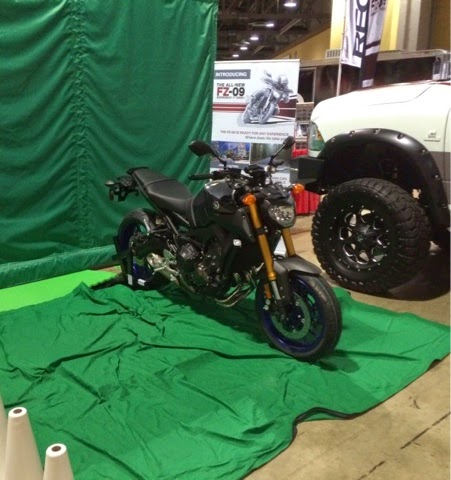Trends in the Photo Industry: Part 5
Yes, part 5. A month or so ago, I wrote about trends I saw affecting the professional event photography industry, and discussed in some detail everything from iPad green screen photo booths to iPhone photos broadcast by news channels.
About six weeks have gone by since I ranted, and in those six weeks, even more evidenced has popped up that I am totally right. (Imagine that!)
Last weekend in California, for the third year in a row, we provided a green screen photo execution for Honda. Our set is impressive: Mario Andretti’s two seat IndyCar, a large, portable counter with three net books that give instant access by participants to their social media through RFID tagging, a 20′ green screen stretching in back of the car — mounted on a steel scrim. Even a light truss with Hollywood style video lighting and softboxes. In my mind, the only thing prettier than the set are the photos it let’s us produce, and I find myself continually posting favorites throughout the day.
The photo set for Honda has evolved over the past three years, and every year it gets bigger, better, and more popular with the fans. On a given race day, we’ll see more than a thousand participants, sometimes twice that.
But last year, there were a lot of other green screen photo executions at the Long Beach race, which is unusual — not for Long Beach, but for the races. Typically, we’re it. But Long Beach is unique — it is a car show that runs inside the convention center in conjunction with the race, so there is everything on display from specialty roasted nuts to jewelry. And, last year, photobooths were all the rage.
Not so much this year.
Not one client who had a photo booth last year repeated this year — except, of course, Honda. Everyone else did something different.
Besides what we did, there were three types of photo experiences: one, you stood at a car and someone took your picture on an iPad — the photo was then sent to you via email. Or, two, a photo was taken on a camera and combined (similar to what I do), or three, the photo was captured on an iPhone, an ap created the green screen combination, and the photo was emailed to the participant.
I don’t think anyone (except Honda) offered photo upload to other social networks besides email — though I could be wrong. I don’t think anyone printed the image. All were distributed digitally.
The one other photographer who did a green screen in a traditional way did not erect any lights, did not even use a flash, and provided images only slightly better than those captured on the iPads and iPhone. Even the booth utilizing the iPhone to run their green screen execution erected video lights — though, of course — the iPhone doesn’t color correct for those lights, so that was a bit problematic. More on that in a brand new rant, later.


